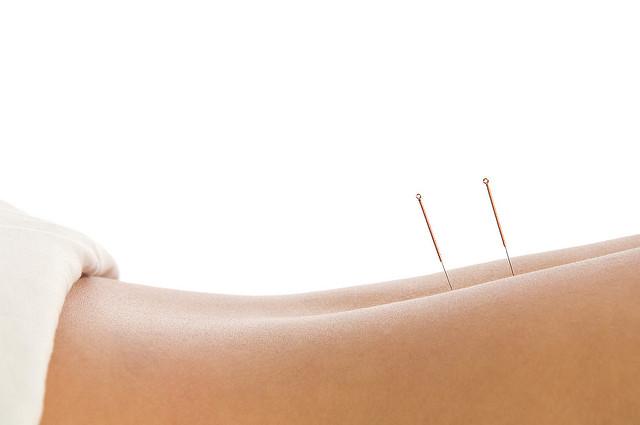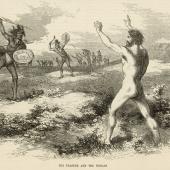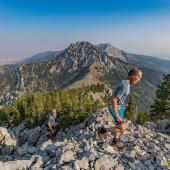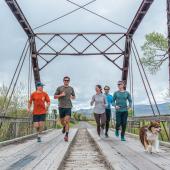Lie Still
Ancient wisdom for today’s ultrarunners.
This spring, there will be no shortage of ultrarunners training in and around Bozeman for the summer's longer trail runs. The challenge for many will entail not only the obvious physical and mental demands of ultrarunning, but the commitment to train with a wise and balanced approach. To get the most out of your training, consider two major themes of Chinese medicine: moderation and prevention. Acupuncture, as an organized system of diagnosis and treatment, focuses on prevention before a condition becomes chronic, and is available to ultrarunners, if you’ll lie still long enough to receive the therapy.
Beware of Brain Fog
“Is it possible to love this sport too much?” was the question posed in the June 2015 Outside Magazine article on overtraining syndrome (OTS) afflicting ultrarunners. As far back as 1990, scientific research on the subject of overtraining determined that “undertraining is better than overtraining, and this seems to be the surest way of avoiding prolonged fatigue.” Some may say that fatigue is not synonymous with OTS, but for the middle- or back-of-the-pack runner, there is little difference.
No matter your speed in finishing these races, it’s crucial to not overdo it in training. While OTS is a term most often reserved for the elite, overtraining is relative, and runners of all abilities should be aware of these possible signs of overtraining:
- Anxiety
- Agitation/Irritability
- Brain fog
- Depression
- Diminished libido
- Dizziness
- Excessive sweating
- Generalized fatigue
- Headaches
- Heart palpitations
- Insomnia, including difficulty staying sleep
- Malar flush (red cheeks)
- Nightmares
- Numbness in extremities
- Pain
One symptom a pattern does not make. In combination, however, the Chinese medicine framework makes sense of seemingly unrelated symptoms, such as some of those above, to help uncover patterns of disharmony, even if blood tests or MRIs yield no definitive diagnosis.
Acupuncture: The Whole Kit & Kaboodle
Fortunately, the patterns of disharmony experienced by many athletes are treatable with tools in the acupuncturist’s tool box: sterilely packaged, stainless steel needles the width of a human hair; micro-current electro-acupuncture; cupping and gua sha; and Chinese herbs, for example. Incorporating acupuncture therapy into an ultra training regime can be invaluable for modulating the effects of training and optimize performance.
As a holistic system of medicine, nothing is left out of the treatment equation. Acupuncture treats the body, mind, spirit, and emotions but, most importantly, it treats each person as an individual. Most people report increased energy, less anxiety and irritability, better sleep, and increased overall well-being. Plus, acupuncture is relaxing in the moment and offers an opportunity to visualize running the race, making the time lying down even better spent.
Up until now, we haven’t mentioned “dry-needling.” That’s because it’s a modern term that focuses on trigger points known as “ah shi” (translated as ah yes!) points, a limited aspect of acupuncture which is best known for its emphasis on channel theory.
To access all that acupuncture has to offer, find yourself a licensed acupuncturist. Keep in mind that you don’t have to be symptomatic to benefit from acupuncture. Consider the age-old advice advocating moderation and prevention as a reminder that “tune ups” are a proactive way to remain in balance during training season.
Volunteer Your Rest Time
Not sure what to do with your rest time? Rootstock Acupuncture clients who are Big Sky Wind Drinker (BSWD) members receive one free acupuncture session if they volunteer for a 2017 BSWD race.
Angela Kociolek is a licensed acupuncturist and the owner of Rootstock Acupuncture LLC.












